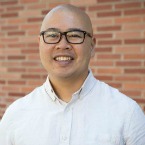By: Rita Agarwal, MD, FAAP & James Tom, DDS, MS
Young children with dental pain and/or infection require treatment at any age—sometimes that means your child will need to go under general anesthesia or sedation. Of course, there are many reasons for this. Some dental procedures require your child to lie completely still, there may be a lot to fix, or the noise of the drill may be scary. The goal is always to provide the safest, most pain-free treatment.
How Safe is Anesthesia or Sedation in Dental Procedures for Children?
In 2019, the American Academy of Pediatrics (AAP) and the American Academy of Pediatric Dentistry (AAPD) updated the current guidelines for dentists and oral surgeons to follow when providing deep sedation or general anesthesia to children.
It requires that there are always at least 2 people in the room who are trained to provide advanced life support measures in case there are any problems. One of these people will be the dentist or oral surgeon performing the procedure and the other will be an independent observer. This independent observer must be "a physician anesthesiologist, a certified registered nurse anesthetist, a second oral surgeon, or a dentist anesthesiologist."
The following information provides an overview of the various types of sedation and anesthesia. It's important for parents to know their options. Talk with your child's dentist or oral surgeon about the type of sedation or anesthesia he or she recommends (and regularly practices) for your child's dental work before the appointment.
Types of Sedation and Anesthesia Used on Children—Know Your Options:
Nitrous oxide: This is a mild sedative and the least invasive. It's commonly known as 'giggle gas' or 'laughing gas.' Children breathe this with a little oxygen. They don't usually go to sleep, but most will get more relaxed. Most will get a little silly and lightheaded, but a few don't like the feeling.
Mild sedation: This medication (or a combination of medications) are commonly used on older children and adults. Your child would be calm and awake—and sometimes able to do what the dentist or surgeon asks him or her to do. After the procedure, your child may not even remember things about the dental visit. Dentists and oral surgeons can safely give these medications while they do the dental work, because your child remains awake.
Moderate sedation: Under moderate sedation children are sleepier, but they are usually able to do what the dentist or oral surgeon asks them to do. Older children and young adults do better with moderate sedation than younger or more fearful children. They breathe on their own and will usually wake up easily. Most children will not remember anything about the procedure. Dentists and oral surgeons can safely give these medications while they do the dental work.
Deep sedation: This involves intravenous (IV) medications to help your child sleep through the procedure. While your child may still move a little and sometimes make noises, he or she may not be able to breathe well on his or her own. There must always be at least one additional qualified professional (independent observer), such as an anesthesiologist (see Who's Who list below) who can monitor your child's heart rate, heart rhythm, blood pressure, and oxygen saturation (breathing) during the procedure and until he or she wakes up. This professional can also determine when your child is ready to go home.
General anesthesia: Under general anesthesia, your child will be completely asleep and pain free. Specially-trained anesthesia professionals (physicians, dentists, or certified nurse anesthetists) will administer medications and monitor your child while a separate dentist or oral surgeon performs the dental procedure or surgery. Anesthesia can be given in a dental office that is specially equipped, an ambulatory surgical center (ASC), or a hospital.
Medication Administration During Children's Dental Procedures—Know the Who's Who:
After you discuss the options for sedation and anesthesia with your child's dentist or oral surgeon, find out exactly who will be administering the medications and who will be watching your child during the dental procedure.
Here's an overview of the various medical and dental professionals who may be involved in your child's dental procedure. Knowledge is power—familiarize yourself with the list below.
Note: The new AAP and the AAPD new guidelines state that an anesthesia professional or a another dentist or oral surgeon who is licensed and trained in anesthesia be with your child while the dentist or oral surgeon concentrates on the procedure. This person will deliver and monitor deep sedation and general anesthesia while the dentist or oral surgeon is performing dental surgery on your child. Other personnel may also be present to assist with deep sedation and general anesthesia or the dental surgery.
Pediatric dentist: Has completed all the above training and licensure as a general dentist, as well as a pediatric dental residency (usually 2-3 years). Pediatric sedation training is included in the residency training. Pediatric dentists may be board certified by taking and passing a national exam.
Oral and maxillofacial surgeon: Completes an oral maxillofacial residency after dental school (4-6 years). Most oral and maxillofacial surgeons have a dental license, and some also have a medical license. In addition, some are granted a general anesthesia permit by a State Dental Board. Oral and maxillofacial surgeons may be board certified by taking and passing a national exam.
Anesthesiologist: A physician or dentist who completes a 3-5-year anesthesiology residency after medical or dental school and passes all required exams. Anesthesiologists can administer anesthesia for dental procedures and oral surgery, and they may have a permit from a State Dental Board to deliver anesthesia in a dental office. Physician and dentist anesthesiologists may have specialized training to treat children, and they may have board certification by taking and passing a national exam.
Nurse anesthetist: A registered nurse who completes a 2-year program after nursing school and has additional clinical experience. In some states, nurse anesthetists can administer anesthesia in a dental office without the supervision of a dentist or physician.
Dental hygienist: Completes a 2-year dental hygiene degree after high school—usually an Associate's Degree. Some dental hygienists have additional education and training such as a Bachelor's Degree. They are licensed by their state and can give local anesthesia (numbing shots) in the mouth.
Dental assistant: No formal training is required. Training may be "on the job." There are also 10-12-month certificate programs. Dental assistants may be registered by their state dental board. Dental assistants do not
qualify as independent observers for deep sedation or general anesthesia.
Dental sedation assistant: Requirements vary from state to state, but the dental sedation assistant can obtain a certificate allowing him or her to help watch patients under anesthesia. Certificates can be obtained via an online education program or at an approved on-site educational program. Dental assistants, however, cannot administer sedation or rescue medications on their own in a dental office.
Additional Information & Resources:
About Dr. Agarwal:
 Rita Agarwal MD, FAAP is Clinical Professor of Anesthesiology at Stanford and a practicing pediatric anesthesiologist at Lucille Packard Children's Hospital Stanford. She went to medical school at Baylor College of Medicine, where she also did her residency. Her fellowship in Pediatric Anesthesiology was completed at Denver's Children Hospital. Dr. Agarwal spent over 20 years at the Children's Hospital of Colorado where she was the pediatric Anesthesia Program Director, former Acute Pain Service Director. Within the American Academy of Pediatrics, she is Chair of the Section on Anesthesiology and Pain Medicine.
Rita Agarwal MD, FAAP is Clinical Professor of Anesthesiology at Stanford and a practicing pediatric anesthesiologist at Lucille Packard Children's Hospital Stanford. She went to medical school at Baylor College of Medicine, where she also did her residency. Her fellowship in Pediatric Anesthesiology was completed at Denver's Children Hospital. Dr. Agarwal spent over 20 years at the Children's Hospital of Colorado where she was the pediatric Anesthesia Program Director, former Acute Pain Service Director. Within the American Academy of Pediatrics, she is Chair of the Section on Anesthesiology and Pain Medicine.
About Dr. Tom:
 James Tom, DDS, MS is the past President of the American Society of Dentist Anesthesiologists and holds a full-time Associate Professor of Clinical Dentistry position at the Herman Ostrow School of Dentistry of USC. He completed his dental education at USC and his anesthesiology residency at The Ohio State University. Dr. Tom represented dentists and dentist anesthesiologists on the American Society of Anesthesiologists Task Force on revising the Practice Guidelines for Procedural Moderate Sedation and Analgesia. In addition, he maintains an Assistant Editor position with Anesthesia Progress: A Journal for Pain and Anxiety Control in Dentistry.
James Tom, DDS, MS is the past President of the American Society of Dentist Anesthesiologists and holds a full-time Associate Professor of Clinical Dentistry position at the Herman Ostrow School of Dentistry of USC. He completed his dental education at USC and his anesthesiology residency at The Ohio State University. Dr. Tom represented dentists and dentist anesthesiologists on the American Society of Anesthesiologists Task Force on revising the Practice Guidelines for Procedural Moderate Sedation and Analgesia. In addition, he maintains an Assistant Editor position with Anesthesia Progress: A Journal for Pain and Anxiety Control in Dentistry.